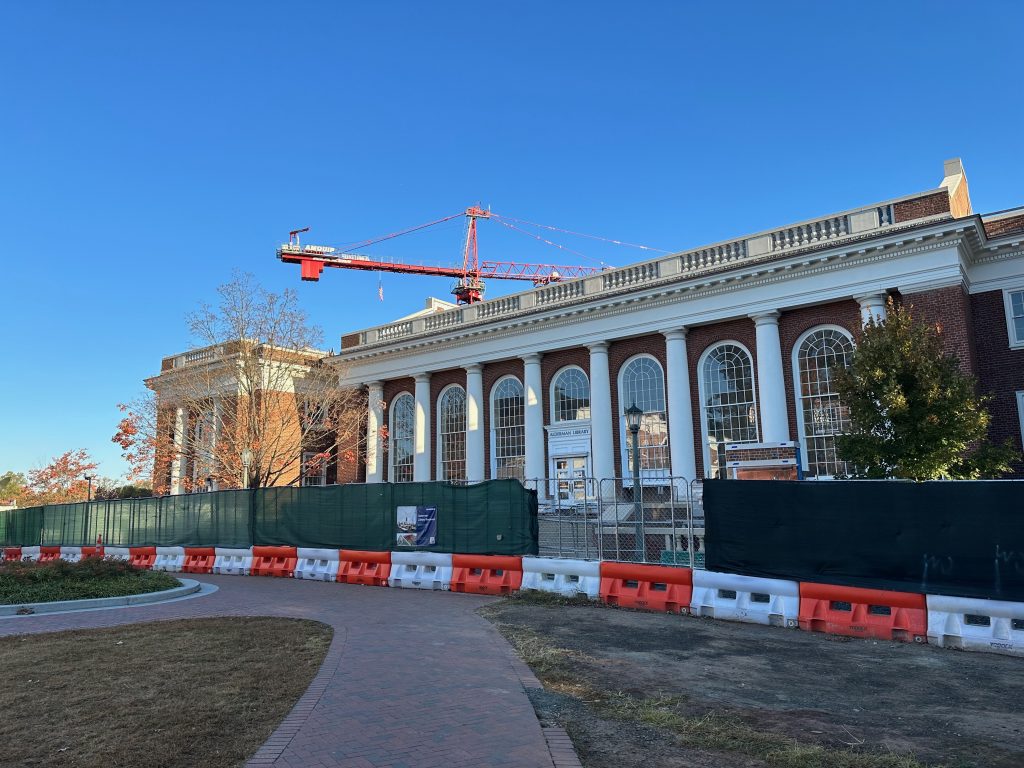
I was at the Virginia Glee Club annual dinner last night, and as always it was the perfect combination of reconnection and reminders of the passing of time. The more often I come to these things, the more the members of the Club and their guests look like my friends, and also like they could be my children. (One young woman at our table, whom I had first met at last year’s dinner, let me know that her mother was UVA class of 1989, or just a few years older than me; then there was the mother of another member who was herself class of 1993.)
The University itself is in constant change; as my cab driver remarked on the way into town from the airport, “It wouldn’t be Charlottesville without something under construction.” This time of course it was Alderman Library, which is famously losing its incredibly dense and labyrinthine stacks and gaining … something. But also it was the building to the right of New Cabell Hall that was under reconstruction, and the myriad of businesses that didn’t survive the pandemic. And even the inn I stayed at, which when I was in school was student apartments; a friend lived there for a few years.
So it was in a pensive mood as I walked back to my hotel from breakfast, and decided to take a different route around Grounds. And found myself walking through Dawson’s Row. I’ve only written a little bit about the Row — all that remains of a set of buildings of varying purposes and origins that originally stretched in an arc from Monroe Hill to where the front steps of New Cabell Hall now stand. Some were originally constructed as dormitories; these were demolished over the years, and no trace of them remains.
One housed Arthur Fickénscher, the first professor of music at the University and conductor of the Virginia Glee Club from 1932 to 1933.
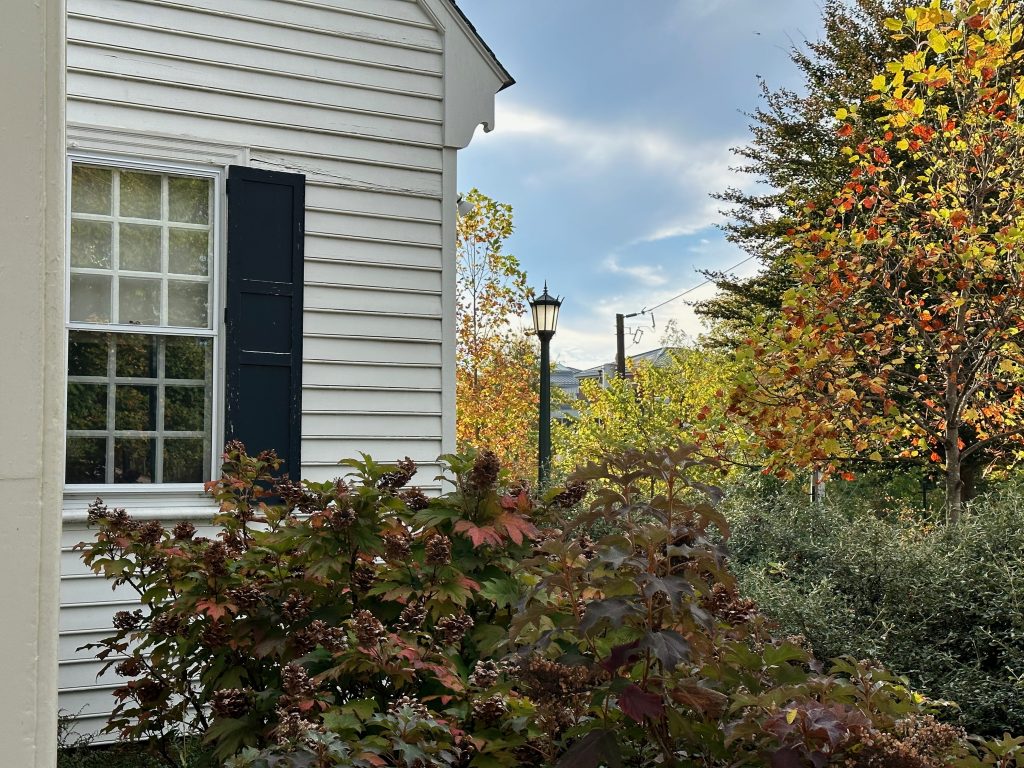
One was built as the parsonage for the University, becoming the first building constructed for religious purposes on Grounds. Built in 1850, it appears to have been expanded in the later 19th century, gaining Italianate porches and roof brackets and possibly losing a rear porch (seen as the black line across the brickwork in the second photo).
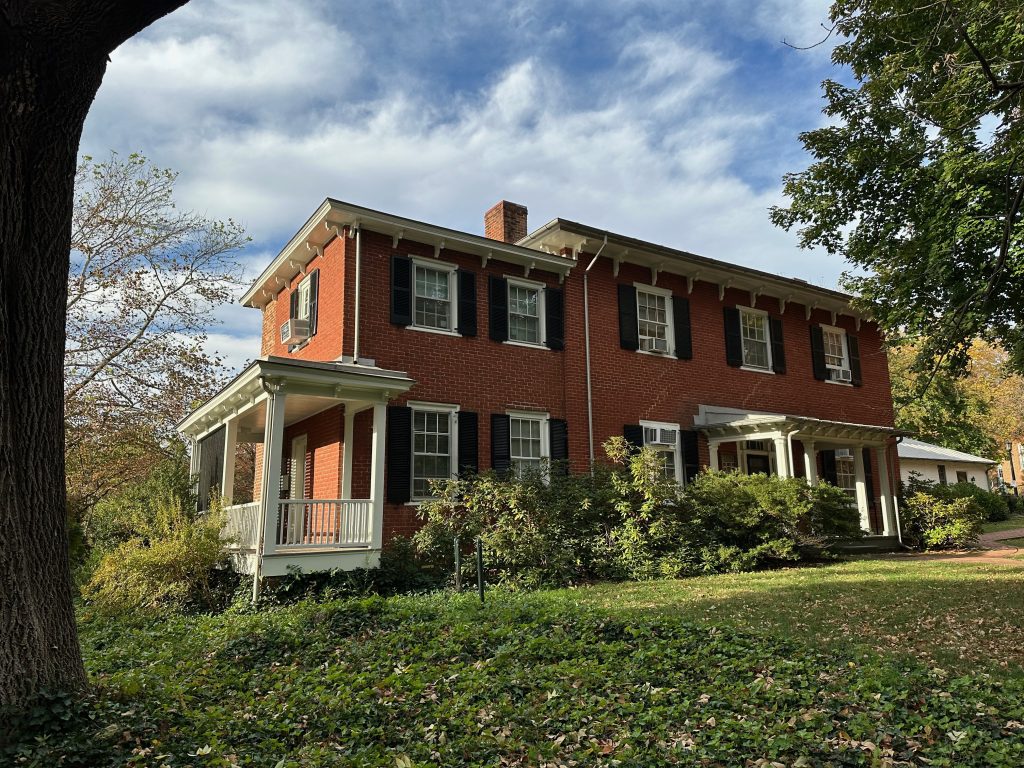
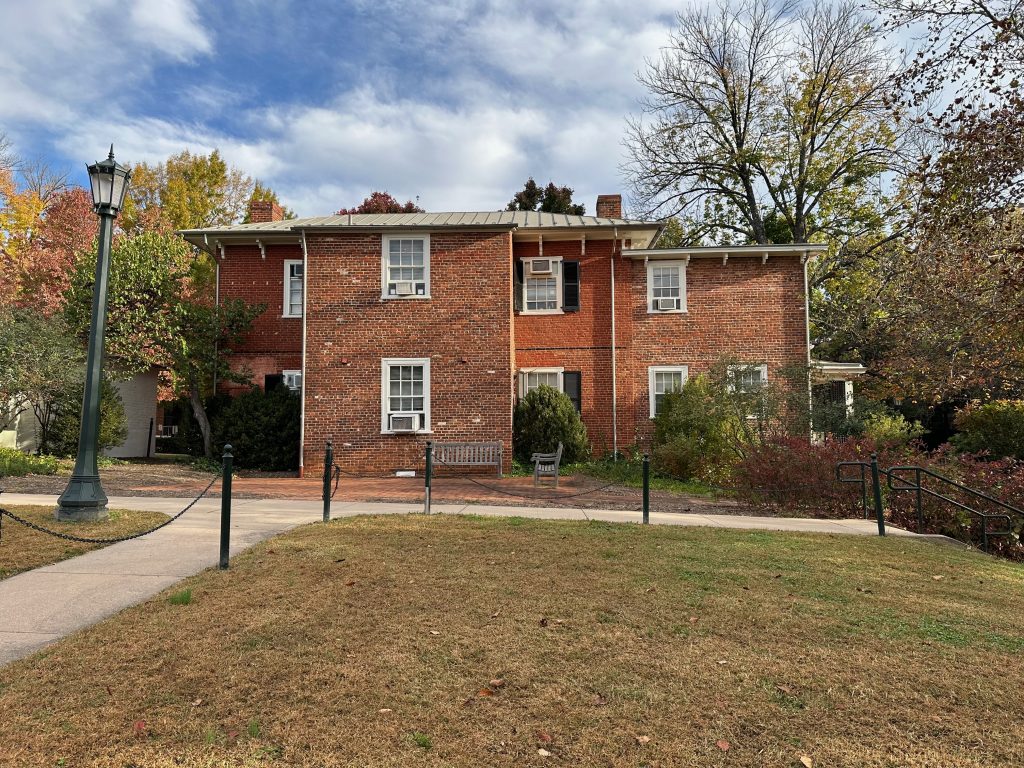
And one, inevitably, was slave quarters for James Monroe’s house across the way at Monroe Hill, or so oral tradition says:
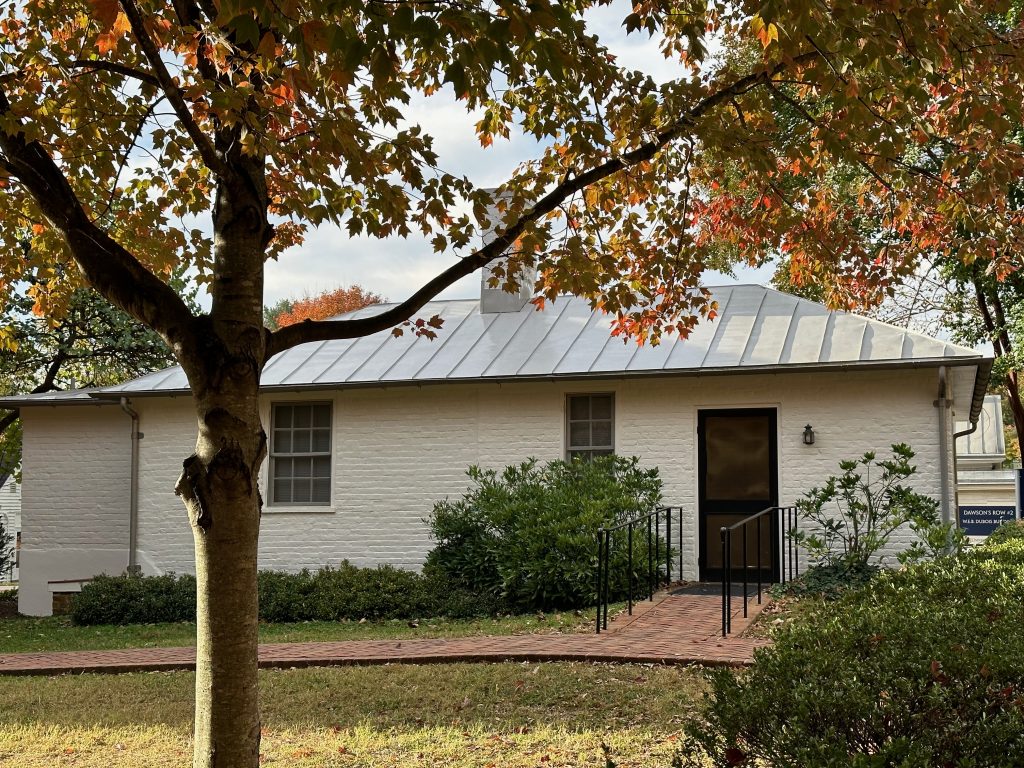
The latter buildings, along with a late 19th century cottage, comprise the Office of African American Affairs at the University. I never saw the buildings as an undergraduate; I knew they were there but had no reason to engage with them. It was only recently, as I was writing Ten Thousand Voices and reading works about the University to inform my research, that I thought about why the OAAA was so important. It came as I was reading The Key to the Door, which I highly recommend for those looking to understand how UVA integrated in the 1950s and 1960s—and, to be honest, through the 1970s, ‘80s, and ‘90s.
And through that research, the way I view the University has changed. I still feel it is my home; in some ways, I belong to it more than ever. But I now can see where the footprints of enslaved laborers were. And yes, some aspects of the University have changed. But that’s not where the most important changes have been. As I learn, as I dig, as I acknowledge that I am old enough to be these young adults’ parents, I feel even more keenly the responsibility of the past, the need to own this story and tell it and compel action from it.
